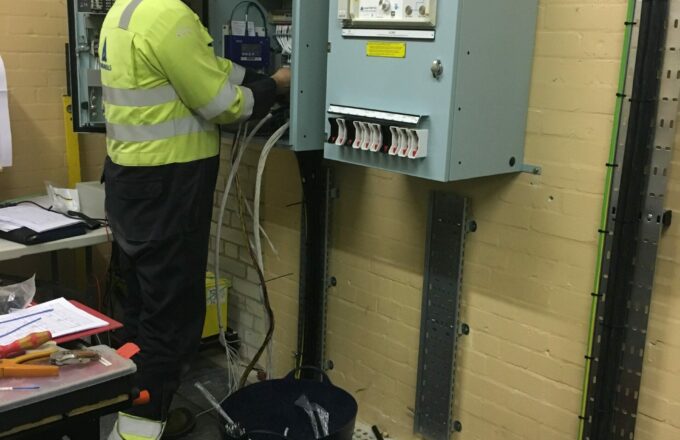Autumn Budget must incentivise local solar to fast-track green energy transition

Dr Jon Hiscock, CEO of grid voltage control specialist Fundamentals, argues that the October 30th budget should incentivise uptake of low carbon solutions at the consumer levels of the energy landscape, to accelerate the UK’s transition to cleaner, more secure and cheaper electricity.
The October 30th budget is widely expected to include a significant number of ‘spend to invest’ initiatives i.e. using money to generate returns which have tangible value. The issue of how to invest – and who should invest – for the best returns is central to the UK’s transition to a low carbon energy future.
Of course we need more big wind and solar farms. But the budget and government policies also need to stimulate investment at the ends of networks, where people live and work – because there are major untapped benefits to be gained for both customers and the environment.
The budget will almost certainly include measures to help deliver 1.5 million new homes in England, plus around 150,000 in Scotland and Wales, over the next five years. That’s 330,000 each year. We believe the default specification for all new homes should include supplier-interactive smart meters, solar panels and EV charging points as a minimum, with battery storage and e heat pumps where possible.
The cost of equipping homes this way at the build stage would be a fraction of the expense of retrofitting them. Return on investment? They would be more comfortable and cheaper to run for residents. Just as importantly, they would be capable of playing an active role in maximising the efficiency of local networks, which in turn would help balance the grid, reduce the need for additional infrastructure, and lower costs, as well as cut carbon emissions.
Europe’s Solar Standard
There are currently some major changes to UK building regulations in the pipeline concerning energy efficiency. But solar panels, for example, are unlikely to be compulsory on new and refurbished buildings, unless there are changes in government policy similar to those adopted by the European Parliament recently.
The EU Solar Standard will mandate solar installations on all new commercial and public buildings by the end of 2026, non-residential buildings that undergo a relevant renovation by the end of 2027, new residential buildings by the end of 2029, and existing public buildings, in steps depending on the size, by 2030.
The European Solar Rooftops Initiative is part of the EU Solar Energy Strategy, which aims to deliver over 320 GW of new photovoltaic capacity by 2025 and almost 600 GW by 2030.
The UK’s current policy of incentivising and granting planning permission for large solar installations on farmland, while there are millions of square metres of empty roof spaces on existing and future buildings, needs reviewing. Even if we do not follow the EU’s lead on making rooftop solar panels compulsory, the government should at least implement measures to make them economically attractive for more ordinary people and small businesses.
Make Solar Retrofit Affordable
The abolition of government-supported Feed In Tariffs in 2019 saved the treasury money, but led to a collapse in demand for domestic solar. The replacement Smart Export Guarantees initially offered pitiful returns, with payments as low as 2p per unit, but have since improved significantly.
However, the economic case for retrofitting solar is still marginal for many people, unless they can afford to buy a storage battery to capitalise on time-of-use tariffs and/or qualify for grants. But the whole system of grants for green home initiatives is bewilderingly complex and erratic – and schemes vary between England, Scotland and Wales.
High on the list of priorities for Great British Energy and the Department for Energy Security and Net Zero should be a radical review of the contribution that small-scale solar can make to the energy mix, in cost/benefit terms, then roll out joined up policies on regulations and incentives that would make increase uptake dramatically.
Untapped Consumer Potential
The potential for consumers to contribute directly to the UK’s green energy transition was highlighted on a recent BBC Radio 4 Bottom Line programme, by Cordi O’Hara, president of National Grid Electricity Distribution, which serves eight million customers in South West England, the Midlands and Wales.
Ms O’Hara said that her area already includes 90,000 low carbon installations (mainly solar rooftop) but there were opportunities for customers to contribute 25GW of renewable electricity, while powering three million heat pumps and millions of EVs. She added that many of these vehicles should be capable of playing a dynamic role in local networks, using bi-directional energy flows to balance supply and demand. And she noted that smarter, more balanced local networks, mean less need for expensive new transmission and distribution infrastructure.
One of the conclusions of the Bottom Line programme was that the UK’s energy transition will not be driven solely by large renewable generation, storage and infrastructure projects. It also needs to embrace millions of users on local networks. We agree wholeheartedly.
Creating Community Networks
Connecting tens of thousands of solar panels, batteries, heat pumps and EVs to create efficient, low carbon local networks presents numerous challenges. Changes in supply and demand can change in seconds, so voltages and frequencies need monitoring and managing carefully. But the technologies to achieve this are already here.
For example, we have developed an algorithm which uses data from smart meters to dynamically adjust voltage settings on control devices to ensure optimum network performance. New community-scale battery systems are coming on stream, providing cost-effective energy buffers that can iron out voltage fluctuations and phase imbalances, often obviating the need for costly network reinforcement.
Engaging local consumers and communities is more than a technological challenge. It is also a political and social issue. We are not alone in believing that the people who are most affected by new green energy infrastructure, such as pylons and industrial solar, wind and storage installations, should receive direct benefits from them – from lower energy costs to subsidised solar panels and batteries.
We have no doubt that mobilising millions of consumers would make an enormous contribution to the UK’s energy transition. We hope the Autumn Budget will include measures which help ensure that everyone enjoys the potential long term economic and environmental benefits from the changes ahead.
Learn more

- Article
- Automatic Voltage Control (AVC/AVR)
UK electricity 2033 – the decade of revolution

- Article
- Automatic Voltage Control (AVC/AVR)
Achieving Operational Flexibility with Voltage Control

- Article
- Automatic Voltage Control (AVC/AVR)
Why the grid needs whole system voltage control

- Article
- Automatic Voltage Control (AVC/AVR)